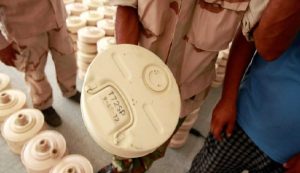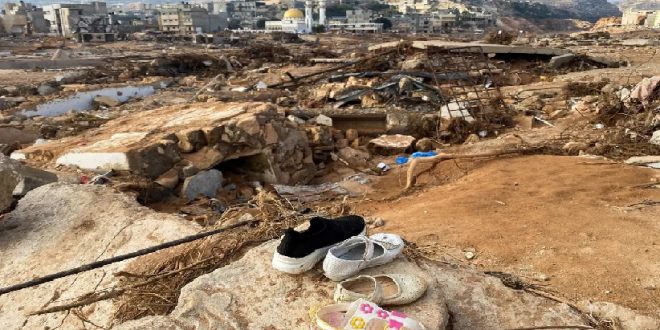22-09-2023
TRIPOLI: Last week, Storm Daniel pounded Libya, wreaking havoc on the eastern city of Derna, where two neglected, ageing dams gave way upstream, unleashing an estimated 30 million cubic metres (8 billion gallons) of water, and obliterating entire neighborhoods of the city, home to around 100,000 people but there could yet be a further deadly crisis, as humanitarian organizations issue a critical warning that the floods may have uncovered unexploded landmines and other weapons left behind from the country’s war.
 Libya, a country of seven million people, has deep political fractures. It lacks a strong central government and has been embroiled in conflict on and off since a revolution toppled longtime ruler Muammar Gaddafi in 2011.
Libya, a country of seven million people, has deep political fractures. It lacks a strong central government and has been embroiled in conflict on and off since a revolution toppled longtime ruler Muammar Gaddafi in 2011.
After the 2011 uprising, the country’s massive arsenal was free for the taking, with dozens of bunkers nestled in residential neighborhoods and other unsecured locations left completely unguarded. An anonymous source with knowledge of Libya’s weapons arsenal told Al Jazeera that two depots, in particular, were targeted by armed groups. One, known as Storage House 3 held plastic Semtex explosives, and the other, known as Storage House 5 held anti-aircraft missiles.
“Suddenly, all kinds of groups (in Libya) were on with military-grade weapons,” he said, which posed a major challenge to the country’s National Transitional Council (NTC) as it struggled to bring order post-2011.
Things got worse when the oil-rich country split between two rival governments in the east and the west in 2014, a UN-recognized administration in the capital, Tripoli, and one based in the now disaster-hit east, and a conflict began between the two.
 In a report published by the United Nations Office for the Coordination of Humanitarian Affairs (OCHA), a drastic increase in the number of landmines and unexploded ordnance accidents (UXO) has been noted since post-war hostilities ceased in the second half of 2020.
In a report published by the United Nations Office for the Coordination of Humanitarian Affairs (OCHA), a drastic increase in the number of landmines and unexploded ordnance accidents (UXO) has been noted since post-war hostilities ceased in the second half of 2020.
As of 2022, there is an estimated 100,000 tonnes of ammunition under the rubble in some parts of Libya, including Sirte, Tawergha, Derna and Benghazi, areas that were all affected by conflict over the preceding decade, added the OCHA.
According to the Libyan Mine Action Centre (LibMAC), 162 mines and explosive remnants of War (ERW) accidents were reported across Libya from May 2020 to March 2022, resulting in a total of 329 casualties, 132 killed and 197 injured of which 76 percent were civilians. (Int’l News Desk)
 Pressmediaofindia
Pressmediaofindia




